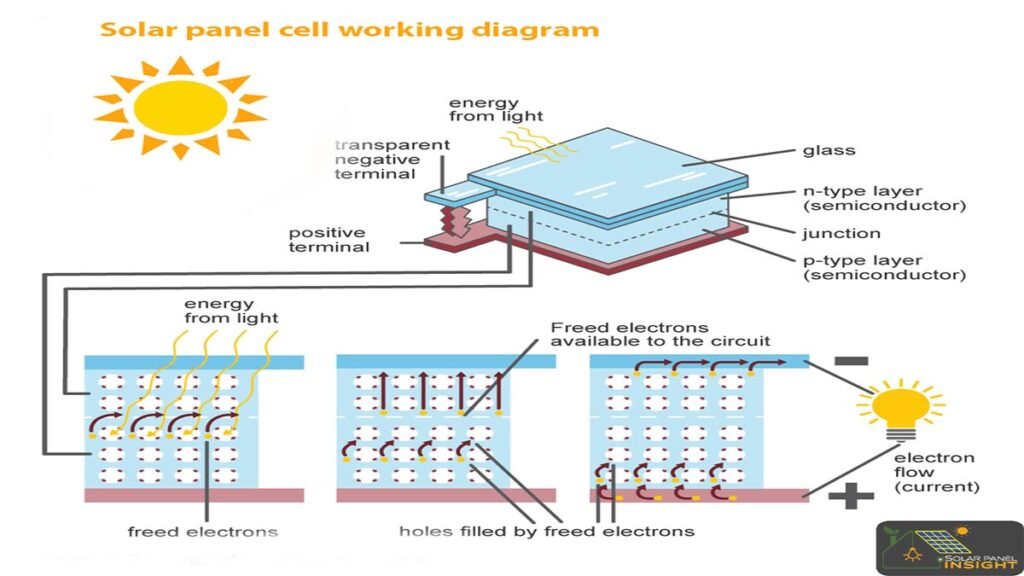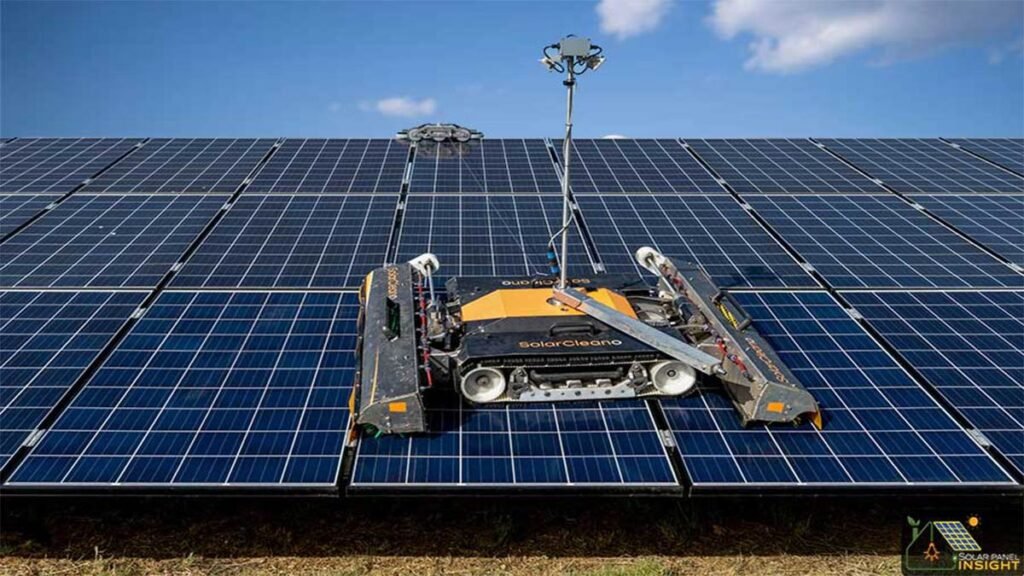A country’s ability to generate and distribute energy is a key factor in its economic and social development. The transition from fossil fuels to renewable energy sources like solar and wind energy is becoming more important in light of current climate change concerns. There has been a marked shift in the energy priorities of many industrialized nations toward making greater use of renewable energy (RE) sources to satisfy domestic demand. According to statistics, 147 GW of presently installed capacity comes from renewable sources all over. Solar energy has gained more attention from all other renewable energy sources from last few years globally.
In the developing country like Pakistan, solar energy trend has apparently grown during the past five years. Pakistan is perfectly situated in the sunniest part of the globe belt that is perfect for solar energy technology since it boasts long daylight spans every day and high insolation values. On a horizontal surface in Pakistan, the daily mean global irradiation can vary between 1900 and 2200 kWh/m2. An annual output of 1.9–2.3 MWh is possible with this level of irradiation, which is the same as 1500–3000 sunlight hours.
Due to high costs of electricity people are shifting from ordinary electricity source to solar energy source. Following solar energy trend in Pakistan have become obvious due to this shift.
Solar energy trend in Pakistan
i. Governmental backing for initiatives
As far as the government of Pakistan is concerned, the energy sector must continue to thrive. Projects investigating alternative energy sources have begun receiving support from the Higher Education Commission, the Ministry of Sciences and Technology, and the Pakistan Science Foundation. Additionally, the administration pushed for international cooperation in solar energy research. Pakistan has been named by scientists, engineers, and researchers as the ideal site for wind and solar power gathering. Incentives from the government have raised public interest in solar energy during the past five years.
The analysis indicates that large-scale commercial solar projects are feasible across the majority of the region. The government of Punjab has set up a 150 MW solar power plant at Bahawalpur and a 50 MW wind power project in Nandi Pur, Sindh. Carbon dioxide and environmental protection will both benefit from this effort.
ii. Advancing solar infrastructure
Pakistan is cutting its reliance on fossil fuels and addressing energy shortages by expanding up its solar power output. Solar power plants would thrive in this country because of its 300+ bright days per year. Among the biggest solar parks in the world, the Quaid-e-Azam Solar Park in Punjab is an enormous endeavor. On its own, this park adds more than 1,000 MW to the country’s energy mix. Solar panel installations are on the rise, both in homes and businesses, as a result of falling prices and financial incentives offered by governments.
iii. Decrease in Prices
Quite unexpectedly, the cost of solar panels has just dropped dramatically in Pakistan. Solar system installations have gained national attention as the overall price of solar panels has dropped by about 60%, leading to considerable savings for consumers. For instance, a 550-watt solar panel went from costing 70,000 to 20,000 rupees—a saving of 50,000 rupees—due to the precipitous decline in price. Similarly, a 330-watt solar panel may be had for less than 15,000 rupees, and a 450-watt panel can be had for less than 20,000 rupees.
Thus, solar panels with a variety of wattages are much sought after. According to the solar traders, the dramatic drop in the price of solar panels has two main causes: reduced taxes and easier import restrictions.
Solar panel import prices have dropped as a result of tax cuts and more market competition brought forth by import freedom.
Keep in mind that this isn’t an outlier; solar panel prices are currently falling all across the world. Here is an overview 5 year trend of decline in prices of panels per watt from year 2020-2024.

iv. Technological innovation
Recent advancements in solar panel technology have increased the efficiency, affordability, and adaptability of solar electricity, contributing to its rising popularity. Solar panels have become much more efficient, which means less wasted sunshine and more electricity produced. Solar power is now more accessible and affordable thanks to new technologies like perovskite solar cells and thin-film solar cells.
Additionally, solar battery storage devices with enhanced capacity and decreased costs have been developed. Solar tracking technology has also come a long way, enabling solar panels to track the sun’s movement and hence increase energy production while lowering their price for domestic usage. In areas with a high albedo, bifacial solar panels—which have cells on both sides—are suitable because they can produce 20% more electricity than conventional panels.
v. Net metering and energy security
An excellent incentive to make the financially smart decision and switch to solar power as soon as possible is net metering, which can reduce annual utility bills by hundreds of dollars for homes.
Net metering has an additional advantage to solar energy trend in Pakistan. There will be less strain on the grid’s distribution and transmission infrastructure and less energy loss from transporting voltage several miles from the nearest power plant if your solar system generates electricity close to where it will be used.
Solar panels are a great way to increase your energy independence and reduce your reliance on the National Grid and the worldwide energy market, which is heavily reliant on fossil fuels. Another major benefit is that they offer a dependable way to generate power on-site.
vi. Global investment and partnership
Policy changes at the federal level might have a major impact on the solar energy industry. Solar power can become more accessible and affordable for the public as a result of certain rules that encourage its development. Government policies that encourage the use of solar power are crucial for a sustainable solar energy future.
A 600 MW solar energy plant has been approved for installation on a land of 2553 acres in Muzaffargarh the region by Pakistan’s National Transmission and Dispatch Company Limited (NTDC). Investors from all over the world are waiting patiently for renewable energy investment opportunities, and this initiative, spearheaded by the Special Investment Facilitation Council (SIFC), is a watershed moment for them. In preparation for their enormous solar projects in Muzaffargarh, NTDC has received funding from the Special Investment Facilitation Council (SIFC). With the support of the Pakistani government, this decision highlights a change in strategy away from expensive fuel-based power generation methods.
vii. Job opportunities
Aside from causing a historic increase in employment opportunities, solar technology is transforming our nation’s energy infrastructure. With the increasing use of solar electricity, the demand for skilled workers and professionals in various industries is on the rise. From production and installation to maintenance and research, the industry offers job opportunities to individuals with a wide range of skills and educational backgrounds. Installation experts play a crucial role in the solar energy industry by setting up and maintaining solar panels on rooftops, on the ground, and in other locations. These roles provide opportunities for individuals with technical knowledge and practical skills, such as engineers, electricians, and construction workers.
viii. Economic growth
Solar energy technology attracts large investments and stimulates economic growth. More and more businesses and households are making the move to solar energy, which is good for the economy on a local, state, and federal level. The fact that solar power reduces energy costs for households and companies means more capital may be reinvested in other areas of the economy. Businesses and consumers alike gain from reduced energy prices since it allows more capital for growth, new product development, and employment opportunities.
ix. Sustainable environment
Solar power is inherently better for the environment and future generations than power plants that rely on fossil fuels. It uses the sun’s rays, the planet’s biggest and most sustainable resource, to generate electricity. To be environmentally sustainable, something must not cause damage to the environment. All that implies is that we should aim for an energy balance first. Therefore, it refers to “development that suffices the present without compromising the ability of future generations to meet their own needs.” Since solar energy may be harnessed endlessly without reducing its supply, it exemplifies the concept of sustainable energy source.


